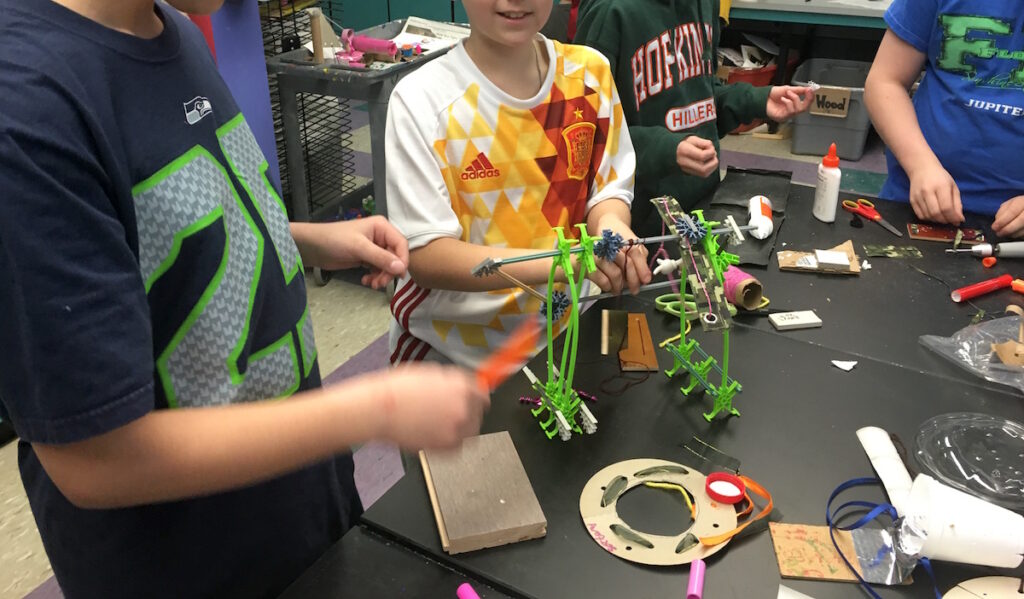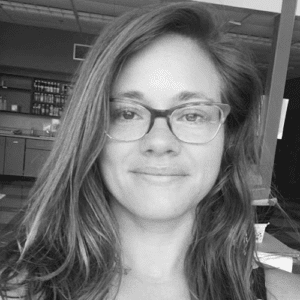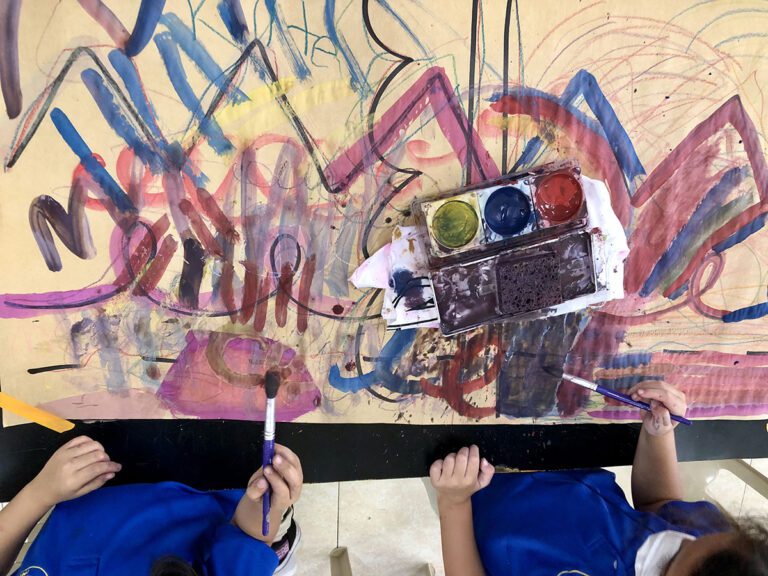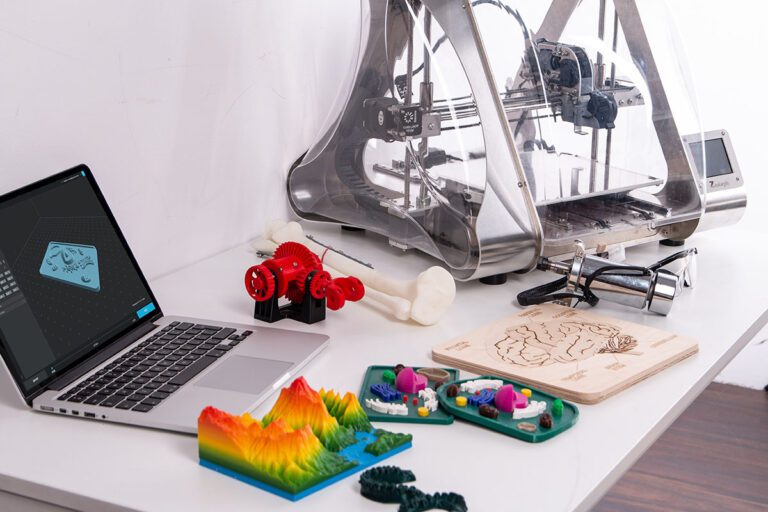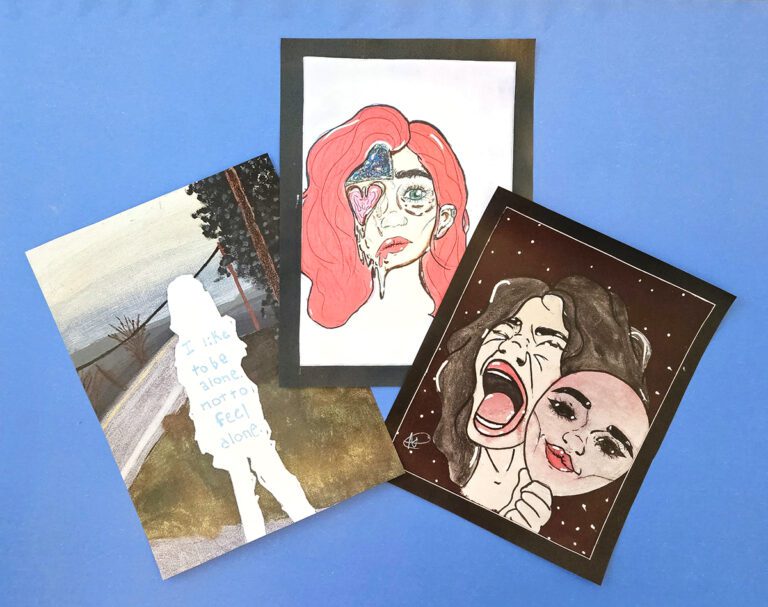Incorporating STEAM in your TAB classroom can seem like a huge undertaking. Many TAB teachers already facilitate risk-taking, innovative thinking, and collaboration in their curriculum naturally. But what about STEAM content? Even though the spirit of STEAM is not based on teaching specific math or science concepts, TAB teachers have a unique space that allows us to expose students to a variety of cross-curricular content. That said, all teachers can tweak the ideas below to fit their unique teaching styles.
Here are some ways you can start adding more STEAM to your curriculum.
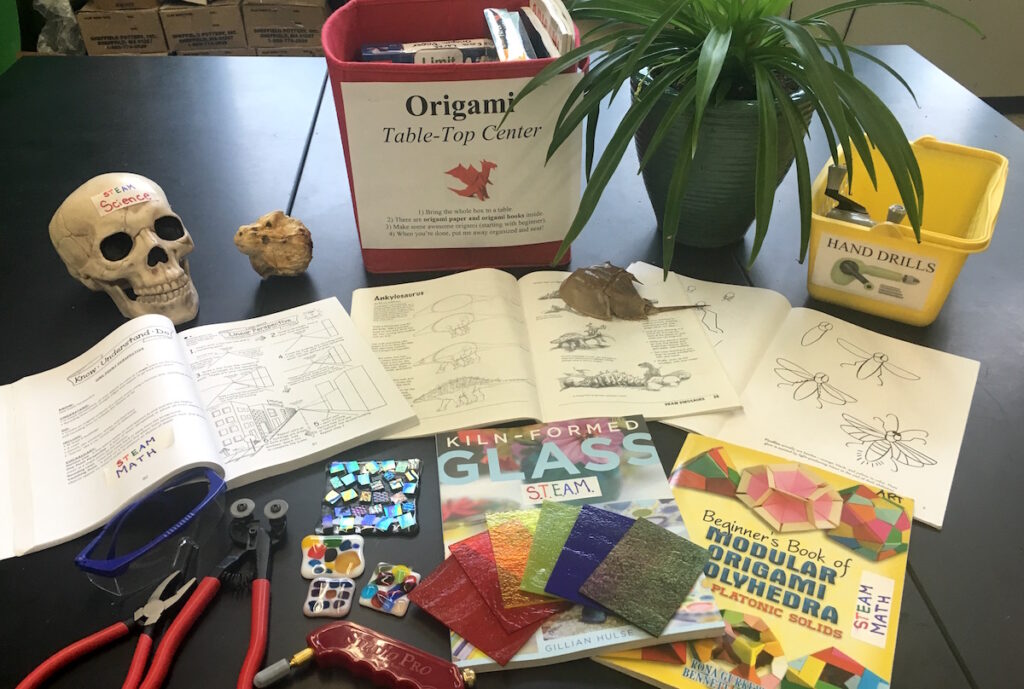
Drawing
Start to develop a collection of drawing books, observational drawing objects, and other resources that support science and math learning.
You might consider:
- Animal or insect drawing books (especially ones that have informative text)
- Skulls and skeletons for anatomical drawing
- One-point and two-point perspective drawing tutorials
- Geometric shapes for 3D observational drawing
- Technology devices to do research and access video tutorials
Label these resources with a STEAM sticker to help kids (and administrators) make the connection!
Collage and Origami
The collage center is also a great place to bring in math and science. For example, you can teach students to work in 3D with paper using accordion folds, tubes, and other methods. Or, you can create a tabletop origami center with origami paper, how-to books, and even some advanced resources for students like this Beginners Book of Modular Origami Polyhedra.
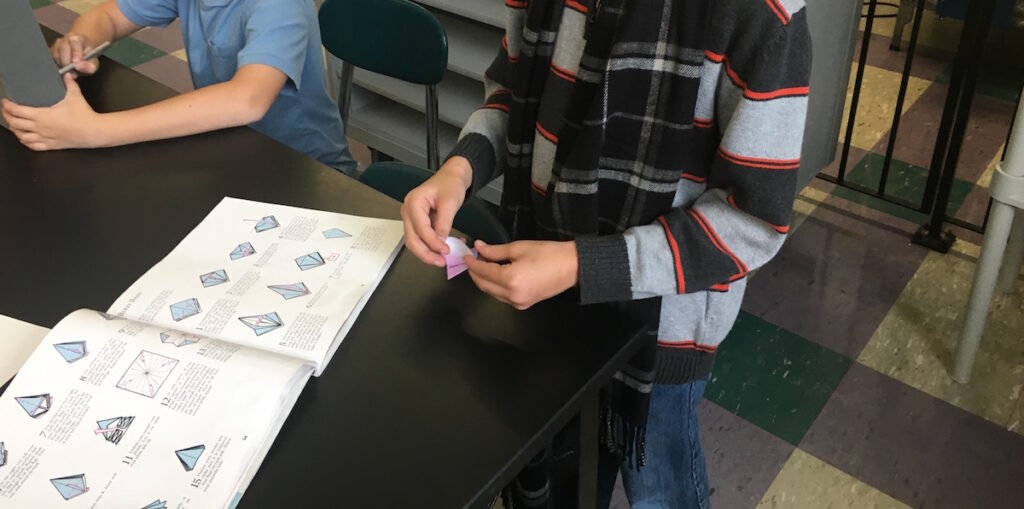
You might also consider providing:
- Measurement tools, protractors, and compasses
- Scientific periodicals
- Discarded STEM non-fiction texts
Sculpture
The sculpture center is a great place to highlight engineering and design.
Here are some ideas.
- Add a sign that says “Sculptors and Engineers At Work.”
- Include tools like glue guns and hand drills.
- Offer a sculpture library with books about things with engines, large-scale sculptures, or even welding or glassblowing.
- Post the Engineering Design Process from the Next Generation Science Standards.
Ceramics
Although you might think ceramics and STEAM aren’t a natural fit, there is a lot you can do here, too!
Try out some of the following ideas.
- Collect shells and rubber insects for a fossil printing lesson and start a discussion about how the kiln works to turn dirt (clay) into rock. Let kids think! It’s okay not to know all the answers.
- Try out a glass fusing lesson using your ceramic kiln and point out that your kiln is a piece of technology invented to fire clay or melt glass for all sorts of reasons. Not just art, but science as well.
- Post a picture of a prototype car made from clay and the designer working on it.
Remember to Keep the Spirit of STEAM
Once you’ve started adding cross-curricular content to your classroom, see how students respond. It’s important to remember that adding STEAM content is more about sparking kids’ interests than teaching particular knowledge.
For example, my origami center is not popular because it incorporates math but because kids love origami. That said, it does get kids thinking about geometry in a fun and deeply meaningful way. Plus, I enjoy finding resources to help my kids make STEAM connections such as the movie Between the Folds on PBS, that talks about how origami can be used to make medicines or used in space innovation.
Being an art teacher gives us a unique opportunity to reach kids in many ways. Facilitate risk-taking, support collaboration, and get kids talking about interesting stuff. That’s where the real learning happens.
How do you bring STEAM concepts into your art curriculum?
Do you have any ideas to add to the lists above?
Magazine articles and podcasts are opinions of professional education contributors and do not necessarily represent the position of the Art of Education University (AOEU) or its academic offerings. Contributors use terms in the way they are most often talked about in the scope of their educational experiences.

